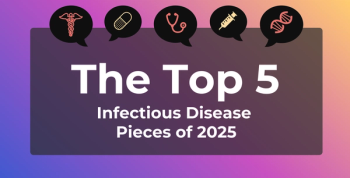
HHS Wraps Up Rule Requiring Price Transparency by Payers
The Trump administration finalized rules aimed at making health care pricing more visible and transparent to those with with health insurance from employers or the individual market.
Finalizing parts of a regulatory rule first proposed nearly a year ago, the Trump administration said that private health plans will be required to provide information about negotiated prices and cost sharing, including information about prescription drug prices.
The
The rule affects individual and employer-based health plans, which insure about 200 million Americans. It requires that insurers provide real-time access to cost-sharing information through an online tool. They must also disclose negotiated rates for in-network providers and allowed amounts paid for out-of-network providers.
Thursday’s announcement also includes prescription drug pricing in the form of similar transparency requirements.
Plans must post in-network prescription drug pricing, taking into account any rebates or concessions received after the point of sale; the information must also include the drug’s historical net price.
“When I first identified transparency as a key part of value-based transformation when I started as secretary in 2018, I said you should have the right to know what a health care service is going to cost, and the right to know what it’s going to cost you out of pocket, and that’s what today’s rule will do,” said HHS Secretary Alex Azar, who has railed against pharmacy benefit managers and drug rebates since he took the position in 2018.
However, the drug pricing information will not include the amount of the rebate itself. According to the rule, the administration noted “that the negotiated rate might be different for branded and generic drugs” and that prices might be set differently according to the plan or the insurer; the rule only requires the disclosure of patient liability and the negotiated amount paid by the health plan. “The Departments anticipate this disclosure generally will not necessitate the disclosure of information on discounts, rebates, or price concessions for a drug,” the rule said.
Another piece of this effort, requiring similar transparency on the part of hospitals in disclosing what they charge for services, is slated to go into effect January 1, 2021. That part of the proposal immediately drew lawsuits from the hospital industry, and
The hospital piece is just one part of the equation for patients, and the payer provision “fills in those gaps and ushers in a new era of price transparency and patient empowerment in this country,” said CMS Administrator Seema Verma.
Payers must make their information available in data sets for plan or policy years beginning on or after January 1, 2022. Starting on or after January 1, 2023, they must make available pricing information on what the administration called “shoppable” services, and then must make all cost-sharing information for all services available on or after January 1, 2024.
In addition, the rule also allows insurers to enter into what the administration called “shared savings” by encouraging patients to seek care from lower-cost, higher-value providers; payers can then claim that savings as credit in calculating their medical loss ratio (MLR) starting with the 2020 MLR reporting year.
The savings would be counted on the expenditure side of the MLR for health plans, not their administrative costs, said Verma.
Stakeholder Reactions
Shortly after announcing the final rule, Verma joined the University of Michigan Center for Value-Based Insurance Design (V-BID) for a roundtable discussion led by A. Mark Fendrick, MD, V-BID Center director, professor of internal medicine in the School of Medicine, professor of health management and policy in the School of Public Health at the University of Michigan, and co-editor-in-chief of The American Journal of Managed Care® (AJMC®).
Verma reiterated her comments from the earlier HHS call that the rule is designed to empower patients. By knowing the costs of care on the front end, patients will be able to shop around to get the best price for them and their family, she said.
She added that this rule is part of a larger effort to empower patients with cost and quality transparency.
Kavita K. Patel, MD, MS, nonresident fellow at The Brookings Institution and editorial board member of AJMC® weighed in to say that
Niall Brennan, MPP, president and CEO of the Health Care Cost Institute (HCCI), highlighted that impact the rule could have on surprise billing and the ability to shop services better.
"We [at HCCI] think surprise billing is literally an embarrassment for the US health care system" and is just another way American suffer when navigating the system, he said.
HCCI research has shown that 1 in 7 patient admissions were associated with an out-of-network service, and someone in Florida had as high as a 1 in 4 chance of getting a surprise bill from an out-of-network service, Brennan said.
The focus on shoppable services and defining those services is also important, he said. "It's hard to shop when you're in the back of an ambulance," he admitted, but there are many other areas where patients can shop services.
"I think we're all in agreement that the status quo is absolutely not sustainable and we need to act aggressively to reign in health care costs," Brennan said.
Representing
She added that PBGH appreciates CMS recognizes quality is an important aspect and she pushed for more transparency around quality. "Cost does not stand alone, it must be coupled with quality," Vela said.
An
"It's an American disgrace that the price to deliver a baby in New York City ranges from $6000 to $70,000 with no difference in quality," he said. "It's the Wild West."
Verma added that she was "heartened" by the comments and she called this rule a "turning point," although she acknowledge there is still "a lot of work to do."
Will patients actually use the tools available when they are available? Historically, other industries have shown that if you put this type of information out there, people will use it, she said. The reason they haven't in the past for health care is because the information available has been spotty.
"The American patient is begging for change," Verma said, adding "This is an opportunity to turn our whole health system around."
One negative reaction came from the industry association for health insurers and payers, which said the rule would have the opposite effect.
“We are disappointed that the final rule will work to reduce competition and push health care prices higher—not lower—for American families, patients, and taxpayers. This is precisely the opposite of what Americans want in their health care," said Matt Eyles, president and CEO of America’s Health Insurance Plans, in a statement.
Newsletter
Stay ahead of policy, cost, and value—subscribe to AJMC for expert insights at the intersection of clinical care and health economics.








































